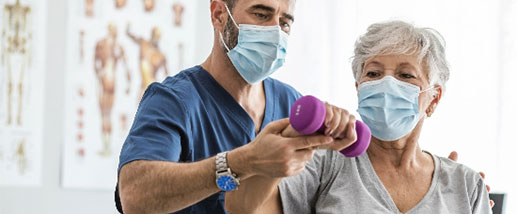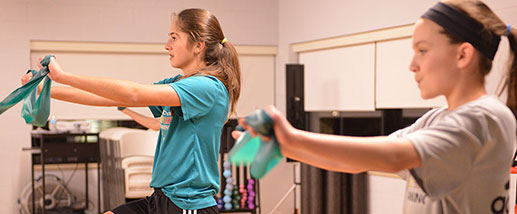The rising thermometer can leave you feeling drained and dehydrated if you don’t focus on your fluid intake this summer. When it comes to hydrating, choose something you enjoy, but keep in mind that both the 2015-2020 Dietary Guidelines for Americans and the American Heart Association suggest we limit the calories from added sugar in our diet to less than 10 percent our total calories for the day. Sugar in the form of liquid calories adds up quickly so pick your fluids wisely!
How Much is Enough?
The amount of fluid you need each day is based on a number of things, including your gender, activity and fitness level, the weather and certain medical conditions such as pregnancy to name a few. An average, healthier person is drinking enough if they go to the bathroom every two to four hours and their urine is pale yellow in color.
What are some of the symptoms of dehydration?
There are many warning signs for dehydration, including:
- Bad Breath: Your breath may be telling you that your body is running extremely low on water content. Saliva has antibacterial properties in it, but lack of hydration can deter your body from producing enough of it. In most cases, the cause for bad breath is dehydration.
- Extra Yellow Urine: Sounds gross, right? But it’s true. Unfortunately, thirst is not the only parameter to know if the body is crying out for water, especially in children and older adults. The color of urine is a better indicator. When you are properly hydrated, your urine should be pale yellow. Urine that is dark yellow (or even orange) or small in quantity is a telling sign of dehydration.
- Headache and Fatigue: When the body loses too much fluid, electrolytes like sodium and potassium are also lowered, altering the chemical makeup of the blood. As the brain is super-sensitive, it triggers a reaction in the form of a headache and fatigue. The more dehydrated you become the more a headache grows and energy lessens.
- Thirst: Seems like a no-brainer, of course, but thirst can actually occur fairly late in the process of dehydration. The key is to stay hydrated – thus avoiding thirst.
What are the best ways to stay hydrated?
When it comes to hydration, water should be your beverage of choice so sport a water bottle in your car, on your bike, when you go to the beach, garden or golf. It’s free, environmentally smart and void of calories. Save the sports drinks for times when you are exercising more than an hour or during high heat and humidity. Keep these tips in mind to stay hydrated:
- Food = Fluid: Remember, fruits and veggies contain water too! Watermelon, grapes, berries, bell peppers, tomatoes and other juicy produce contain tons of water to keep you hydrated.
- Be Aware of Alcohol: Alcoholic beverages can lead to additional fluid losses. For every alcoholic drink have one non-alcoholic drink. Remember to drink in moderation. The American Heart Association recommends up to two drinks per day for men and one drink per day for women.
- Don’t Wait: One mistake that’s easy to make is waiting to drink until you feel thirsty. Thirst and dry mouth can be signs of mild dehydration. Even if you don’t feel thirsty, it’s important to drink regularly throughout the day and listen to your body!
Mercy Health is committed to helping you Live Your Whole Life by nurturing well-being through body, mind and spirit.




